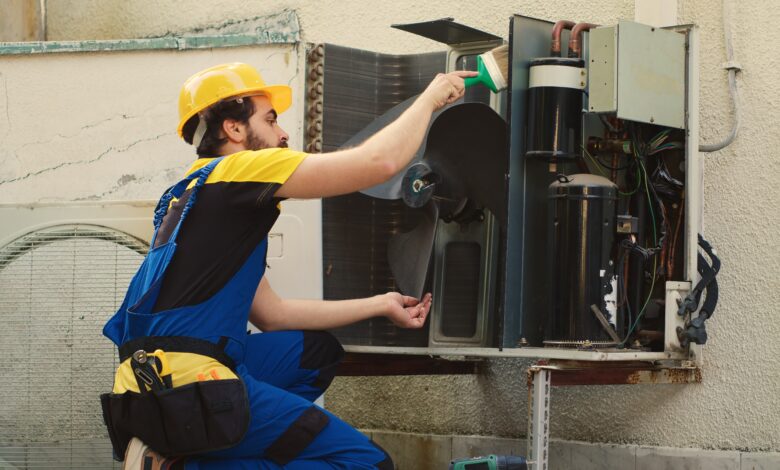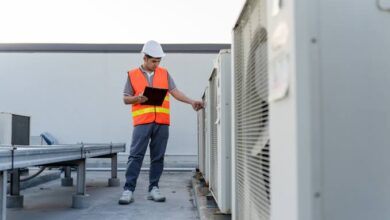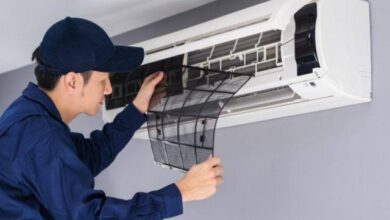Understanding HVAC Linseeds and Their Role in System Efficiency

The Role of Linseed in Modern HVAC Systems
- Historical Uses and Transition into HVAC
Linseed oil has been used for centuries as a natural preservative, protective coating, and binding agent. Its ability to harden when exposed to air made it worthwhile in wood finishes, paints, and sealants. Over time, these qualities attracted interest from other industries seeking natural alternatives to synthetic chemicals. In HVAC systems, linseed-based compounds have emerged as potential protective coatings for metal surfaces, sealants for ducts, and lubricants for mechanical parts. Their natural drying properties enable them to create barriers against rust and corrosion, which can extend the lifespan of equipment exposed to fluctuating temperatures and moisture. The adoption of linseed products in this industry also aligns with a broader push toward eco-friendly solutions that reduce reliance on harsh chemicals. By bridging traditional applications with modern engineering, linseeds have carved a niche within HVAC maintenance and system efficiency, demonstrating their adaptability and lasting value in industrial contexts.
- Applications in Maintenance and Protection
The use of linseed-based products in HVAC systems is primarily connected to maintenance practices that extend equipment longevity. When applied as protective coatings, linseed oil derivatives help prevent oxidation on metal parts, reducing the chances of rust and corrosion in ducts, vents, and other components. Linseed compounds are also used in some natural lubricants, offering smoother performance for moving mechanical parts without introducing harmful residues into the environment. Additionally, linseed products can be incorporated into sealants that provide airtight connections, improving energy efficiency by minimizing leaks. These benefits contribute to lower maintenance costs and longer-lasting systems, which is why some manufacturers have begun experimenting with HVAC applications that include linseed formulations. Homeowners and contractors seeking eco-conscious solutions often look for HVAC linseed from https://ad.engineering/linesets/ suppliers that provide sustainable alternatives, combining system protection with environmental responsibility. As awareness of these options grows, demand for natural protective products continues to rise within the industry.
- Environmental and Economic Benefits
One of the strongest arguments for using linseed-based solutions in HVAC is their environmentally friendly profile. Unlike petroleum-based products, linseed is a renewable resource harvested from flax plants, making it a sustainable and biodegradable option. This reduces the ecological footprint of HVAC maintenance, mainly when linseed-based lubricants or coatings are used instead of synthetic chemicals. In addition to being eco-conscious, linseed applications can deliver economic benefits by extending the lifespan of equipment and reducing repair costs. Systems protected by natural coatings and lubricants require fewer interventions, which translates into savings for both residential and commercial property owners. The move toward green solutions also adds value by aligning with environmental standards and certifications, a growing priority in modern construction and facility management. By combining cost-effectiveness with ecological responsibility, HVAC linseeds demonstrate their potential as a viable alternative to conventional maintenance products, contributing to long-term sustainability across multiple aspects of the industry.
- Future Potential in the HVAC Industry
While linseed use in HVAC applications is not yet mainstream, its potential continues to expand as the industry embraces more natural and sustainable solutions. Ongoing research focuses on enhancing the durability of linseed-based coatings and refining formulations to achieve greater efficiency in industrial settings. With technology advancing rapidly, hybrid products that blend natural and synthetic elements may emerge, offering the protective qualities of linseed while maintaining industrial-grade resilience. Contractors and manufacturers are beginning to recognize the value of diversifying maintenance materials, not only for performance but also to meet the increasing demand for eco-friendly systems. As renewable resources play a larger role in HVAC innovation, linseed products could gain more recognition as a reliable option for protection, lubrication, and sealing. The future of HVAC maintenance may include the expanded use of natural derivatives, such as linseed, thereby reinforcing the balance between performance, durability, and environmental stewardship.
HVAC linseeds represent an interesting convergence of traditional natural resources and modern engineering demands. Their long history of use in coatings and preservation makes them a strong candidate for applications in protecting and maintaining HVAC systems. From preventing rust to enhancing lubrication and sealing, linseed-based products offer both practical and ecological advantages. The environmental benefits of using a renewable resource complement the economic advantages of reduced maintenance costs and longer-lasting equipment. While not yet a universal choice, linseed-based solutions are gaining traction as sustainable alternatives in a field increasingly focused on efficiency and eco-conscious practices. As research and innovation continue, HVAC linseeds may become a more common fixture in both residential and commercial maintenance. For homeowners and contractors alike, embracing natural solutions like linseed can provide reliable performance while contributing to broader sustainability goals. Their importance lies not only in functionality but also in their role in shaping a greener future for HVAC systems.



